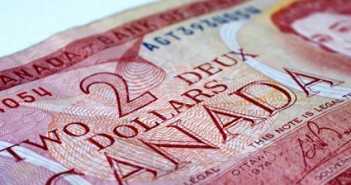The Bank of Canada warned about falling inflation and the C$ is falling. The BOC was not expected to change policy and leave the interest rate unchanged at 1%, making the accompanying statement more important.
The Canadian dollar was on the back foot recently. It traded at around 1.0660 before the announcement. It’s important to remember that important figures are released in the US at the same time.  USD/CAD is climbing towards 1.07.
Here is the key part of the statement:
Meanwhile, inflation has moved further below the Bank’s 2 per cent target. Core inflation is being held down by significant excess supply and by the effects of heightened competition in the retail sector, which look to be more persistent than anticipated. In addition, total CPI inflation has been pushed down by lower gasoline prices.
The risks associated with elevated household imbalances have not materially changed, while the downside risks to inflation appear to be greater.
Does this imply a rate cut coming? The BOC does not want to encourage excessive household lending. Nevertheless, it seems that deflation will remain an important issue for Canada and also for Europe.
The Canadian dollar broke above the critical 1.0660 line, but there was no real follow through so far. Above this line, the pair is trading at 3 year highs. There are various reasons for the loonie’s weakness: issues with exporting Canadian oil, household debt, a not strong enough US, commodity currencies’ weakness and a change to the dovish side from the central bank.
Earlier in the day, Canada reported a surplus in its trade balance for the first time in nearly two years. This contrasted the US trade deficit.
For more, see the USDCAD forecast.



